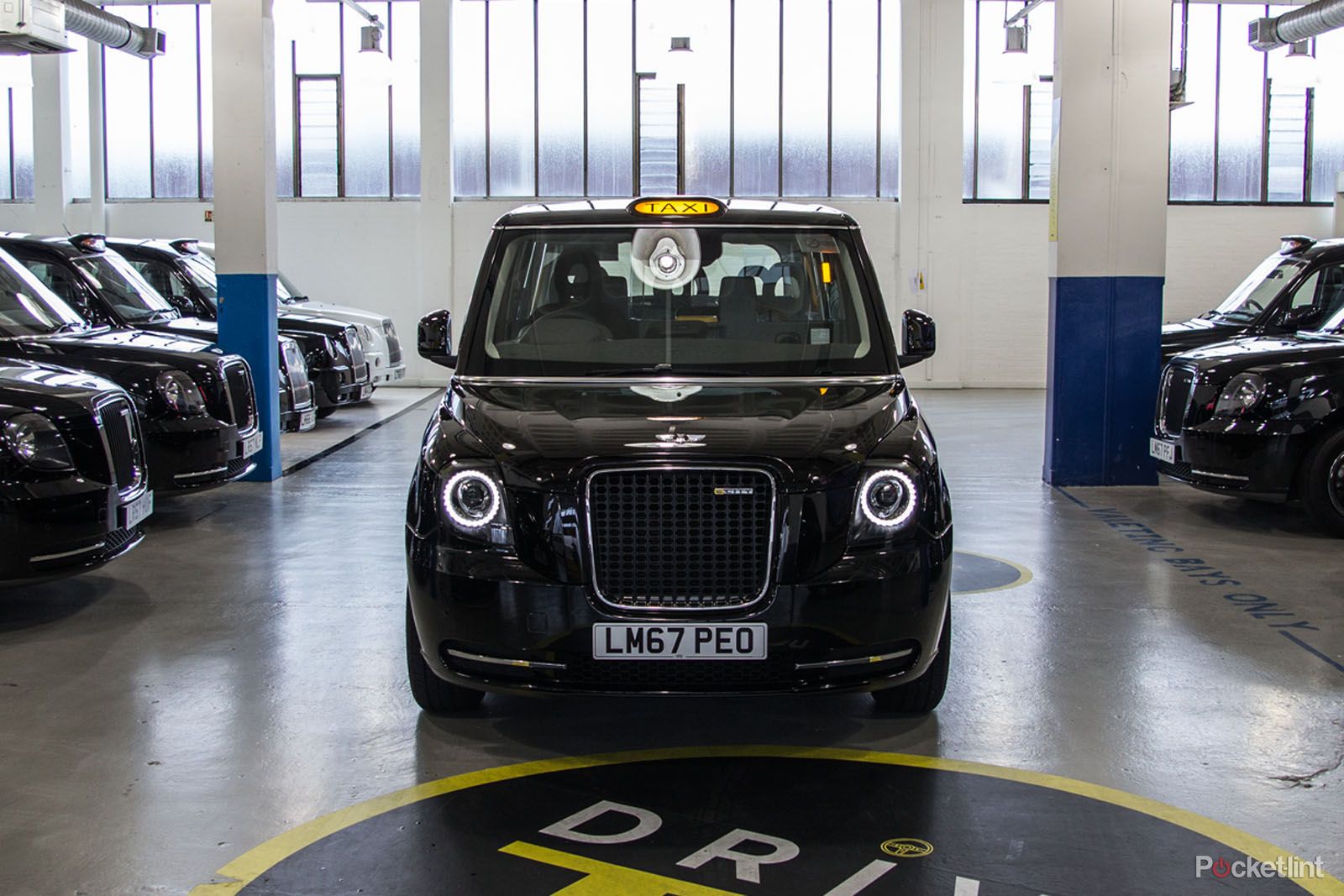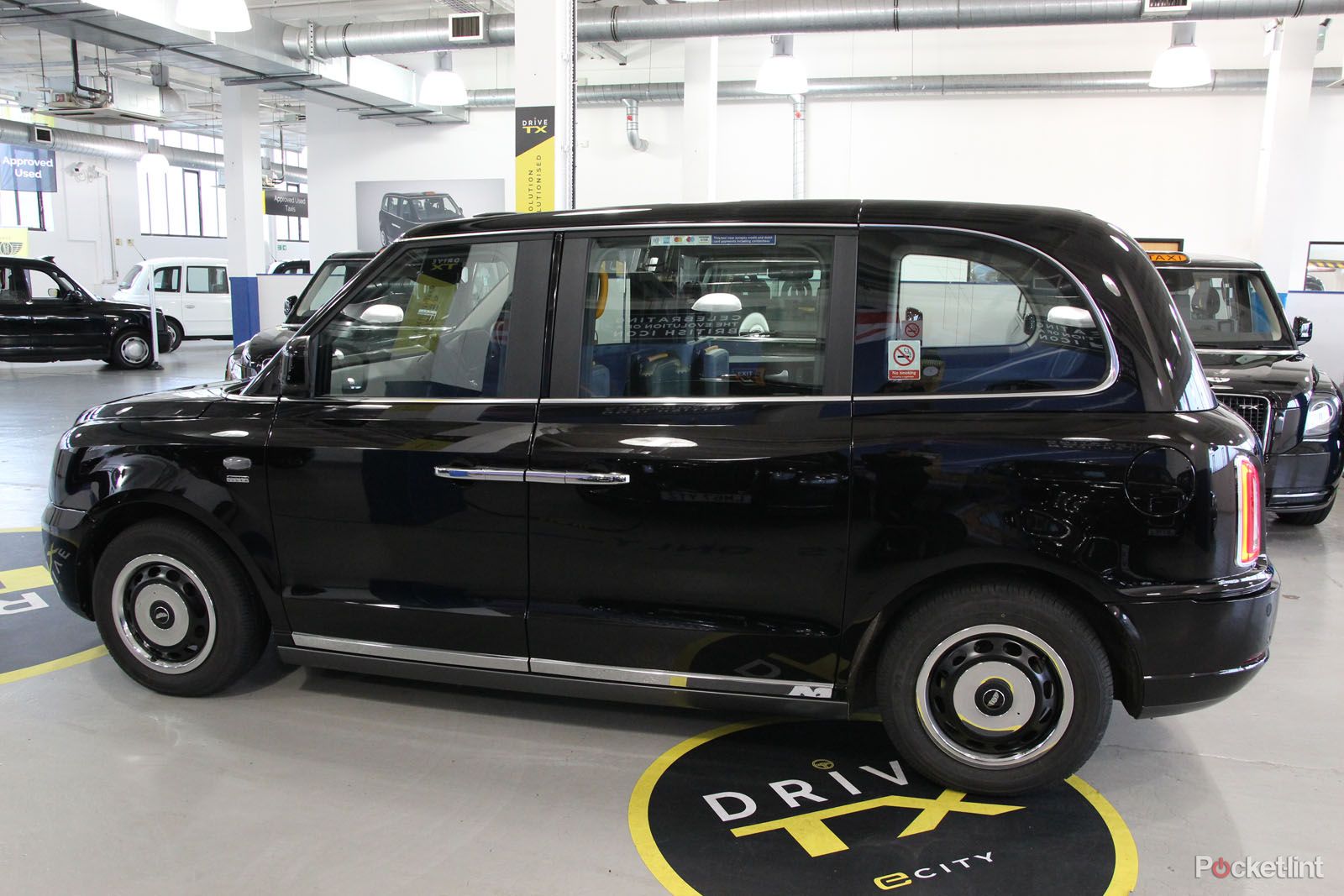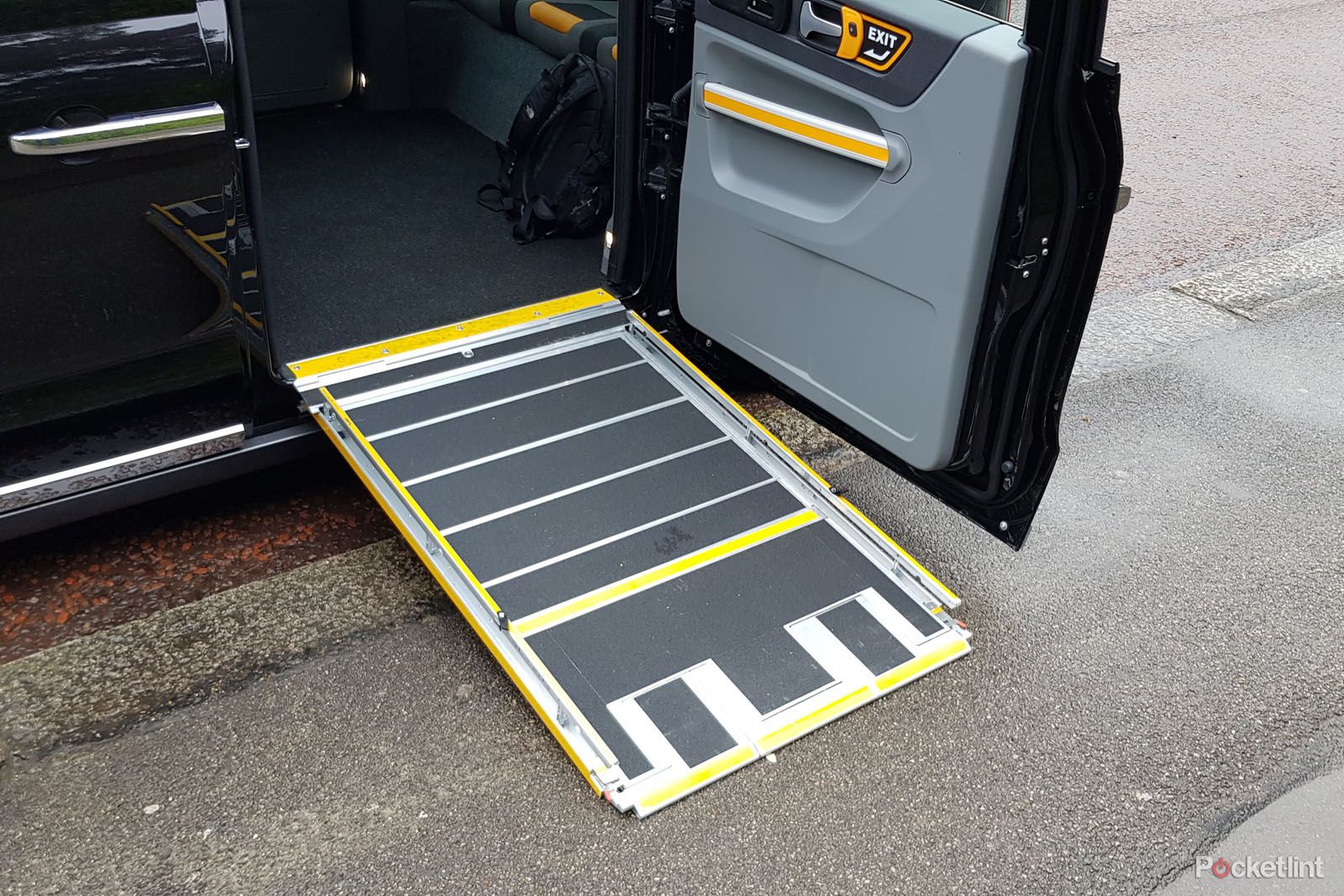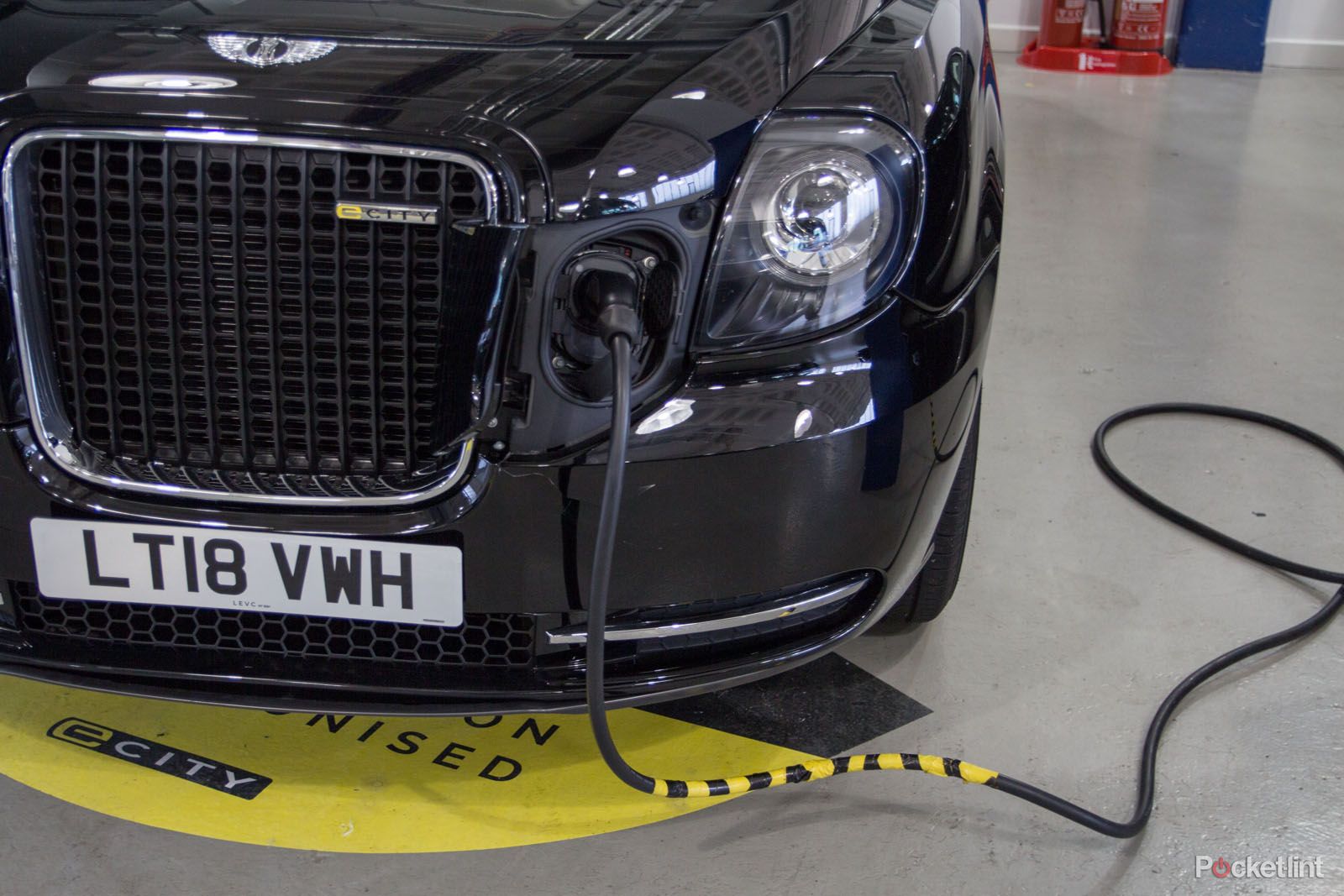Think of London and you'll think of the black taxi, an icon of the city's congested streets, weaving between the red buses, splashing through puddles under grey skies, confidently driven by cabbies armed with the Knowledge.
For many years The London Taxi Company was responsible for putting these cars on the road, building a bespoke taxi rather than adapting an existing car (like a Mercedes) for example.
Now owned by Chinese company Geely (who also own Volvo), the company is now called the London Electric Vehicle Company and its responsible for the new LEVC TX - the electric black taxi that's hitting London's roads.
Passenger-first design
The LEVC TX adopts a lot of the heritage of the outgoing taxis and once you're in the back seat, there's a familiar look and feel to things. That's down to the huge passenger space that's now been expanded to carry six people, adding an additional folding the seat over the previous taxis.
But it's a lighter and more inviting space thanks to a huge glass panoramic sunroof. This is a standard feature of the new taxi, which not only lets in a lot of light, but means you can admire London's rising skyline at the same time.
Coach style doors, adorned with huge handles, have a hint of Rolls-Royce about them, importing a real sense of occasion to things. This isn't a tired Prius, it's first class passenger travel.
That also extends to accessibility. There's a ramp integrated into the floor so that wheelchair users can get in and out, another benefit of those wide doors. It's a manual ramp, so the driver will have to jump out to extend it, but it only takes a minute.
From the exterior, beyond those door handles, there's a nod to British automotive heritage. We can't help thinking that the front lights and grille have a hint of Bentley about them, but there's no avoiding the size and with more space for driver and passenger it's a fairly bulky-looking vehicle.
A modern EV under the skin
With diesel getting a bad press recently and a changing tide in how we power vehicles, most of the interest in the LEVC TX will be in its powertrain.
The retiring taxi is a 2.5-litre diesel, while the LEVC TX breezes in with 31kWh battery and 1.5-litre petrol range extender. The new taxi will have a range of 80 miles in pure electric driving, with the range extender giving an extension to 300 miles total.
That range extender charges the battery rather than driving the wheels, so it works in a similar setup to the BWM i3. The rear wheels are driven by the electric motor, which LEVC tells us had to be controlled to keep the acceleration under control. It might be cool for the Tesla Model X to smoke sports cars off the line, but it's not a good look for a taxi. TfL rules also limit the taxi to 80mph.
The driver can change the driving mode on the installed touchscreen interface, selecting from pure electric, battery saver (i.e., using the range extender to ensure that the battery remains fully charged) and a balanced mode that uses both and manages the whole thing automatically.
There are two levels of regenerative braking on the LEVC TX, meaning that you can lift off the accelerator and recoup some electric power. You can also turn off regenerative braking so the car will coast smoothly, if you want.
There are two charging points on the front of the car, one for 20kW AC CCS charging and second for 50kW DC CHAdeMO charging. The latter will see the battery charged to 80 per cent in about 30 minutes, ideal for coffee break charging.
Ultimately, however, the idea is that drivers charge at home, with LEVC suggesting that drivers could save around £100 a week in fuel costs compared to the retiring diesel taxi.
A quite ride and drive
The first thing that hits you about the LEVC as a passenger is that it's quiet inside. Stop at the lights and you're sitting in silence with the notable absence of the diesel thrum. You also don't have that yawning automatic acceleration that characterised the sound of a taxi in the past.
The passenger space of a taxi has always been a great place to sit and talk. Face-to-face conversations with friends and that sense of passenger community is something you don't get in a normal saloon, where you're sitting cramped in a line. With lower noise and more light, the LEVC TX enhances this sensation. It's a nice place to be.
The passenger experience is enhanced with modern twists. The card payment machine is standard (yay), but there's also a USB powerpoint for your phone and a three pin socket that you could use to charge your laptop in the back. You can also have Wi-Fi.
But a lot of the modernisation is in the front for the driver. It's totally fitting that there's a digital driver display accompanied by a large touch console off to the left. This is angled for easy interaction, rather than being flush like most passenger vehicles. With no passenger seat in the front, there's no need to worry about access for anyone in the front other than the driver.
This console gives access to satnav, radio, smartphone connection and settings for the car and it's all easy to get to grips with. It's not all digital however, things like the heating retains easy button controls. There's even a heated driver's seat.
Driving is incredibly easy. There's great visibility all round, that incredibly small turning circle but otherwise it drives very much like any modern automatic.
When can I catch a ride in the new London taxi?
The LEVC TX is already on the roads of London and during our drive through the city we spotted several on the road. They're out-numbered by the older versions, of course, so if you want to catch a ride, you'll have to time your hailing carefully.
And the price? Oh, it's a cool £55,000 and while that may sound like a lot, it's not a huge jump over the price for the old taxi.




